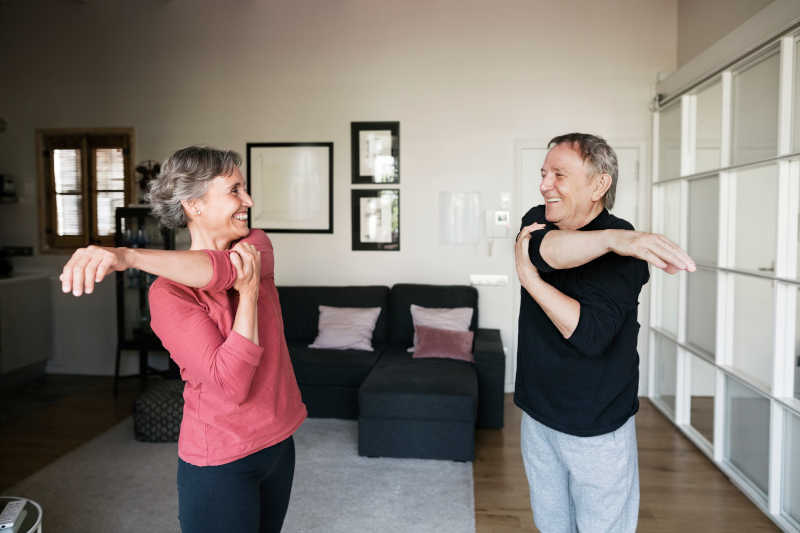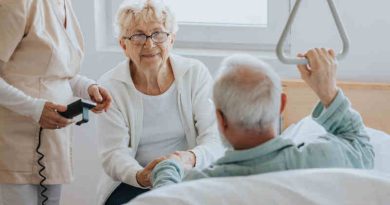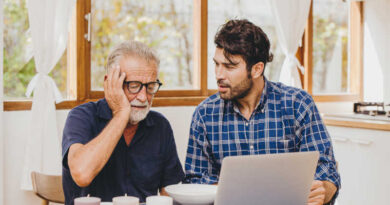Exercise is Still Important for Seniors’ Quality of Life
Can seniors exercise? Seniors need exercise more than you think. Seniors at home in hospice care can use treadmills and other methods to stay active.
Many families don’t have time for senior gym sessions. Physical activity can cost hospice patients and the elderly. Thus, consult a doctor or personal trainer for the ideal elderly exercise.
Should Seniors Exercise?
People get weaker and more susceptible to diseases as they age. Even with regular doctor visits, the elderly may still have aches and pains. To avoid stiffness, backaches, and illness from paralyzing older folks, doctors advise daily exercise.
65-year-olds can safely exercise for 150 minutes. Younger relatives can help their elders cut down fitness routines.
Which elderly exercise is healthiest?
Everybody can train with many exercises. Tone and get fit with gentle, moderate, or vigorous exercise. However, seniors and older individuals benefit from exercising to preserve their endurance, flexibility, and strength. A 15-minute stroll can improve blood flow and heart rate.
Stationary Cycling
People benefit from home gym equipment today. Chronically ill or disabled people may struggle to go outside. A home gym equipment like a treadmill or a stationary cycle can suffice for burning calories, decrease blood pressure, and battle joint ache.
Modern equipment track mileage, heart rate, intensity, and stress. Ask a local geriatrician which machine is ideal for older exercise.
Chair squats
Without spending lots of money on fancy exercise equipment, you can utilize tools and furniture at home. One approach to do squats and aid an elderly with this program is to utilize a chair. Stand up from a strong, tall chair without touching the armrests. Endeavor to sit and stand 3 to 4 times in succession. Ask your personal trainer for extra chair workouts.
Fast Walking
Foot, calves, hamstring, and joint exercises help improve posture and core strength. Brisk walking is ideal for oxygenating your heart and lungs. Briskly walk for 30 minutes in your goal heart rate zone. At 65, the lowest rate is 77.5 bpm and the highest is 131.75 bpm.
If you can talk comfortably with some breathlessness following the program, you can also evaluate your brisk walking comfort. You can also walk on a treadmill at your senior’s pace.
Balance Exercises
Seniors should exercise regularly. Seniors need balance to improve posture and prevent home falls. Tippy-toe balance routines improve strength, flexibility, and endurance. Lift your ankles and toes while standing still. Balanced senior exercises may require an adult to prevent falls.
Wall Pushups
Maintaining flexibility is important because sudden muscle or joint motions can still injure. Fitness instructors or family members can help seniors execute wall push-ups. Stand two feet from a wall and extend your arms.
Dancing
Who says exercise can’t be entertaining? Dancing boosts adrenaline and blood circulation. By producing more red blood cells and oxygen, it can boost immune system protection.
Light housework
Home workouts can boost sickness resistance even if you’re inactive or limited by medical issues. Pushing the lawnmower, folding clothes, or dusting the house always moves muscles, joints, and tendons. Chronic illness can hinder physical activity within a week.
How Much Exercise Do Seniors Need?
Doing daily chores without help suggests you exercise often. Exercise helps older persons prevent age-related diseases.
Seniors should not strain their hamstrings, calves, quadriceps, or other muscles during activity. Dumbbells, bench press, HIIT, and other heavy activities may be dangerous for seniors.
Wear loose garments before an elderly person exercises. Drink water and use sunscreen when outside.
If Exercise Causes Unexpected Stress, Contact a Doctor
As with any physical activity, older folks may experience some stress. Here are some signs to avoid when seniors practice strength activities.
- Chronic pain
- Coughing or other respiratory symptoms
- Breathlessness with modest cardio or aerobic exercise
- Easy bruising, swelling, or inflammation



